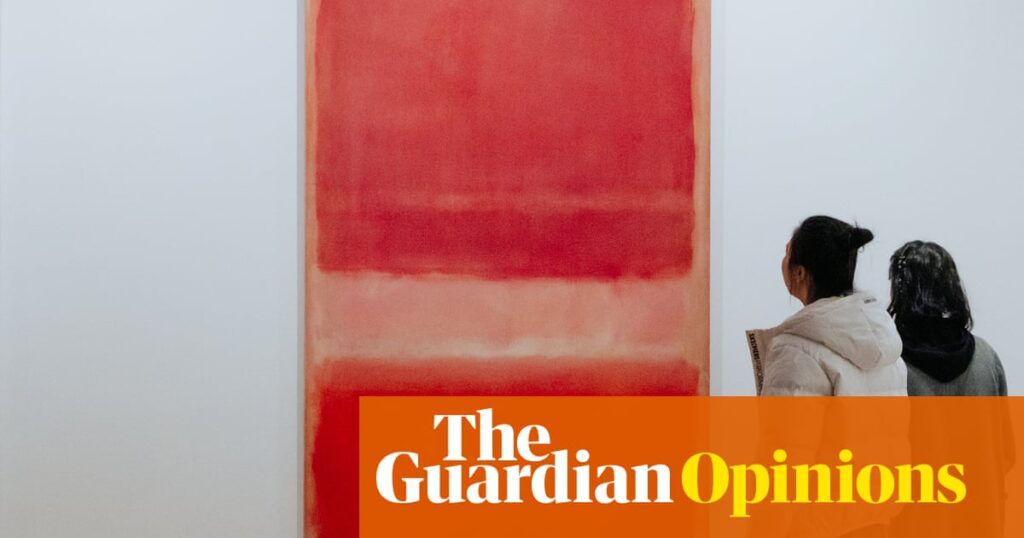
On a recent Sunday afternoon, with a few hours to spare, I found myself drawn to the idea of experiencing art in a more profound way. Instead of wandering through the gallery, spending fleeting moments with countless pieces, I decided to focus my attention on one masterpiece: a Rothko at the National Gallery of Victoria. My plan was simple—stand in front of it for ten minutes, absorbing its essence, before stepping back into the sunshine.
Australia is fortunate to have permanent collections at state galleries that are free to the public. These collections belong to us, offering an opportunity to engage with art on our own terms. Growing up, I participated in the Art Gallery of South Australia’s children’s program, which included a hidden picture game that encouraged exploration and discovery. This early exposure taught me that galleries are welcoming spaces, open for personal interpretation and enjoyment.
The Power of Focused Art Appreciation
As an adult, I relish planning a day around gallery visits, often returning to the same exhibitions to discover new details in familiar works. However, there’s a unique beauty in dedicating time to a single piece of art. It’s akin to visiting an old friend, allowing for a deeper connection and understanding.
Mark Rothko, renowned for his color field paintings, creates large canvases that delve into the depths of human emotion. The Rothko at the NGV, titled Untitled (Red) and painted in 1956, exemplifies this. The wall text accompanying the piece quotes Rothko:
“I’m interested only in expressing basic human emotions – tragedy, ecstasy, doom and so on.”
Standing before it, I was enveloped by the painting’s vastness. A thin dusky red layer barely conceals the canvas, with three squares of color—rich blood red, light rose pink, and terracotta orange—sitting atop. I moved closer, allowing it to fill my vision, then stepped back to take it all in. Despite the presence of others, I found peace and calm in my contemplation.
The Science Behind Art’s Emotional Impact
Happiness researcher Arthur Brooks notes that art expands our perception of the world, a sentiment echoed by Stanford neuroscientist Andrew Huberman, who describes how art can activate our panoramic vision. This relaxed, widened gaze is the antithesis of the stress response, where our vision narrows. Art, therefore, opens us to the world, allowing us to exist fully in the moment.
This concept of panoramic vision resonates with me during gallery visits. Focusing on a single piece allows time to slow, creating a sense of being embraced by the artwork. Everything else fades, leaving only the viewer and the art.
Personal Journeys Through Art Across Australia
My gallery experiences extend beyond Rothko. In Canberra, I repeatedly visited James Turrell’s Skyspace: Within, Without at sunset. Upon artist John Olsen’s passing, I stood before his Five Bells at the Art Gallery of New South Wales. Emily Kam Kngwarray’s works, Awelye II and Awelye V, at the Art Gallery of South Australia, continue to captivate me with their intelligent simplicity.
In Queensland, the Watermall at the Queensland Art Gallery transforms with each installation, the art and water feature reshaping one another. Meanwhile, in Perth, Mr. Ngarralja Tommy Way’s Warla, Flat Country brings the desert’s heat into the gallery, a vivid memory from my summer visit to the Art Gallery of Western Australia.
Embracing Art in Everyday Life
Not every gallery visit needs to be an elaborate affair. The privilege and joy lie in spending whatever time you have with a single work of art. Our public collections are ours to enjoy, a reminder to pause and appreciate them, even if only for ten minutes. Whether it’s a painting, sculpture, or video piece, these moments of connection enrich our lives.







